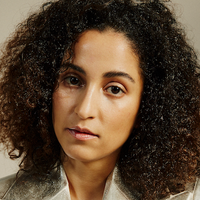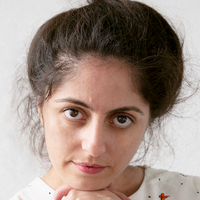On taking a creative approach to government
Prelude
Gabriella Gómez-Mont is the founder and director of the Laboratorio para la Ciudad, Mexico City´s experimental and creative office. Aside from being a professional problem solver for the city and its 21 million area residents, Gabriella is a journalist, visual artist, and documentary filmmaker. She has been awarded the Audi Urban Future Award, and the TED City 2.0 prize among others. Gabriella is a Yale World Fellow, a MIT Director’s Fellow, a TED Senior Fellow, and was named one of the 100 most creative people by Fast Company.
Conversation
On taking a creative approach to government
Gabriella Gómez-Mont—founder of Mexico City's Laboratorio para la Ciudad—talks about the role of creativity in a place where creativity usually goes to die but is needed most: the government.
As told to Uli Beutter Cohen, 1693 words.
Tags: Art, Culture, Beginnings, Adversity, Education, Collaboration.
What is the Creativity Lab of Mexico City and how did you get involved?
I got an invitation from the mayor out of the blue. I did not want to work in government at all. I was running my own Arts and Culture foundation and was working as a journalist and documentary filmmaker. I’ve always shape-shifted, but I didn’t necessarily want to step into government until I found it a provocative, imaginative exercise to create a city department from scratch. I had a fellowship at Yale that was well-paid and gave me time to think, imagine, and explore. To be honest, I always thought that the Mayor was going to say no because my proposal was too outlandish. To my surprise he said yes and ten days later the Laboratorio para la Ciudad was announced. I was completely shell-shocked.
21 million people live in Mexico City’s metropolitan area. We have almost 5 million children in Mexico City. That is the population of several European cities combined. It’s a huge and vulnerable population. Working with a city like this, we understand the Lab’s role as it unfolds. I have 20 people on my team and the rest of the government is 280,000 civil servants. There is no other way. Half of my team comes from disciplines that are still slightly rare in Mexico City, such as urban geographers, data analysts, political scientists, social scientists, and civic techs. The other half comes from the humanities. They are writers, designers, filmmakers, historians, activists, architects, and social innovation experts. Everything we do sits in this uncomfortable but super-interesting space between the humanities and the urban sciences.
It sounds like you were able to translate your creativity to a space that’s usually thought of as the place where creativity goes to die.
I have been fascinated with making reality malleable even before I took on the Lab. In a sense, we are able to recreate the rules of engagement and suspend disbelief. We visualize the intangible. Plato’s vision of the republic was to get poets out of government. But why? Why have artists not been part of it? Why has culture been considered the cherry on the cake? We still think that creativity and culture are an afterthought, but imagination is not a luxury.
How did you unite a group of very different people with very different experiences and perspectives?
In transdisciplinary practices there’s always the danger that everybody waters down their own language instead of adding and creating knowledge. A dynamic where everybody ends up explaining themselves in the simplest of terms often isn’t that enriching. One of the very first questions that needs to be asked is, “How do you actually have the sum of all parts be more instead of less? How do you create a space where different perspectives and theories can reinvent a language of their own?”
Take Issac, our urban geographer. He has a brilliant mind and can read the whole spatial geography of Mexico City to an astounding degree with data. I would ask him to speak with the artists who were seeing the city as an emotional being. Having both of those conversations at once is, in a certain sense, quite painful at the beginning. Language can be a Trojan Horse. We had to create a new way of being together, and new reference points. This is very much what has happened with my team. And I can tell you that four years ago, when we were just starting, this was probably one of the more painful experiences at the Lab. And now, four years later, I think it’s one of the Lab’s biggest strengths.
Did everyone in the Lab have experience with working for the government?
Except for my lawyer and my administrator, nobody had experience in government. The average age at the Lab is 28 to 29, which is more or less the average age of the city. I feel like we’re having a meta-conversation that has been going on since the onset of the Lab, which is what does government actually mean for a new generation?
Do you have advice for dealing with hurdles like bureaucracy that keep people away from government?
I think people are right to be daunted. I don’t necessarily think that government is made to be creative and nimble. But instead of expecting something, why not step into it, see what’s happening, understand it, and then find out how you can make it work in different ways? That is very much what we’ve done with the Lab. It’s a speculative exercise that became a reality. The Lab is us putting our foot in the door within government structure, opening up a space, and creating very different rules of engagement not only for ourselves but everyone we collaborate with.
Tell me about your interests and it’s there. If you’re interested in culture—it’s government. If you’re interested in walking, or trees, or communities, or health, or human rights, or women’s rights—government has a foot in absolutely every conversation and has a huge influence on our daily lives. From the moment we wake up to the moment that we go to sleep. Government is a way of sinking your hands into the city.
There’s such a huge mistrust in political systems and political dynamics at large. Take voting. People don’t trust their governments. They don’t trust institutions. Why is it that at the same time more people are actually very invested in their communities? They are creating grassroots projects, they are going to marches, and they are joining urban farms in their community. How do we take that and mix it up to create a healthier and more imaginative link between social energy and political will?
What projects does the Creativity Lab work on?
One of the things we’ve worked on was Mexico City’s Constitution. In my former life, I would have thought that would be one of the most boring topics on the planet. Nowadays, I’m completely fascinated by these tools that work as social blueprints of who we are and could become.
Democracy in Mexico City is still young and very imperfect but full of potential. We got our first Mayor in ‘97, and Mexico City has done an amazing job at defining itself, even with one hand tied behind its back. In a very conservative country, we have gay rights, the most sophisticated transsexual rights on the continent, abortion laws, euthanasia laws and support for single mothers in place. In the U.S. you’re discussing if people should die in the streets if they can’t afford medical insurance. Here, the Mexico City government partners with universities and thousands of doctors make house calls, for free, into the most marginalized communities of Mexico City where people cannot go to the hospitals. So creating a Mexico City Constitution is the next upgrade if you will. It gets implemented at the end of this year.
That sounds like a big task, to create a Constitution for a whole city from scratch. How did you approach it?
The mayor chose 28 people—from renowned activists and academics, to the first woman to get married to another woman, to Carlos Cruz who used to be a gang leader and now gets people out of gangs and into productive work—and those 28 people created the first draft of the Constitution. The mayor wanted to open it up even more, especially to the young constituency. So he asked us to create mechanisms for this to happen. We ended up involving 500,000 people and now their ideas are in the constitution.
Politics is a way of people deciding together who we want to be as a collective. How are we going to live together? How are we going to create imaginary spaces together? How are we going to remain healthy together? All of these questions were big drivers in the beginning of politics and I think that we’ve lost them along the way. They’ve been turned into something bureaucratic and many of these ideas have died in our hands. You have to remember that first you create the city and then the city in turn creates you.
What do you do, especially as an artist, when a government becomes increasingly more dangerous, like in the United States?
I think it’s quite telling that one of the first things Trump did was try to slash the support for artists. Because artists, when political times get intense, leave the safe spaces and start to get involved in protests and movements. They become activists and build the resistance.
I think that the exercise is resistance and definitely creating a new language. That becomes so important because whoever creates the language is the one leading the conversation. The only way to counteract the conversation that is happening at the White House is to create a resistance that starts with a narrative that makes space for other people to enter. And on the other hand, it cannot only be about resistance, because the thing that fires up people’s minds is a vision of what is possible—an imagination of what is coming.
Right now there is no exit point from a neoliberal view of the world. It seems to be reality with a capital R, when that’s actually not true. I have a feeling that the formulation of a different set of possibilities can come from the creative world. The question is: “How do we start bringing back utopia?” Not necessarily as a permanent space, but as a way to explore other ways of being in the world. That is, what I think, the role of artists should be.
Gabriella Gomez Mont recommends:
-
Tell Me How It Ends: An Essay in 40 Questions by Valeria Luiselli
-
Tacos de barbacoa on a Mexico City sidewalk on any given Sunday
-
The Tiniest Place(El Lugar Más Pequeño){:target=”_blank”}, a documentary by Tatiana Huezo
-
Invisible Cities by Italo Calvino
-
The rooftops of Mexico City at sunset, including the Lab´s
- Name
- Gabriella Gómez-Mont
- Vocation
- Director of Mexico City’s Creativity Lab

Some Things
Pagination



